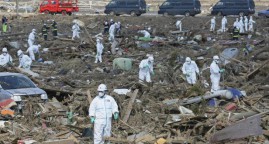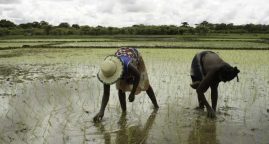Agriculture pays the highest price to disasters, according to a new FAO report
O3/19/2015. In 2010, 800,000 hectares of standing crops were swept away by floods in Sindh (Pakistan).
The Third United Nations World Conference on Disaster Risk Reduction resulted in an international strategy oriented toward prevention and better resilience to natural disasters.
According to the Global Assessment Report of the International Strategy UN Disaster Reduction for 2015, average annual disaster losses are estimated at about 314 billion dollars. The Conference was also marked by a message of considerable importance on the part of FAO. Nearly a quarter of the damage caused by natural disasters in the developing world are borne by the agricultural sector according to preliminary results of a new FAO study.
Read the article (in french) on the United Nation website
Related Articles
The State of Affairs and Ongoing Challenges of the Fukushima Nuclear Disaster
March 2015. The present report is a provisional and partial translation of the comprehensive Japanese report …
How Environmental security and human rights are linked?
10/05/2017. According to experts, the natural resources and their fair distributions are essential to ensure the human rights.
The Future of Securing Global Cities
03/22/2016. Making cities resilient against man-made crises and natural disasters is the key to the twenty-first century.






